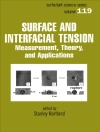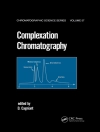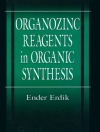Demonstrates the vast potential of spectroscopic characterization possibilities in polymer research, it clearly outlines and describes the principles, advantages, instrumentation, experimental techniques, and noteworthy applications of cutting-edge spectroscopy.
Jadual kandungan
PART I
PROGRESS ON SPECTROSCOPIC TECHNIQUES
Introduction to Polymer Spectroscopy
FTIR spectroscopy and spectroscopic imaging for the analysis of polymers and multicomponent polymer systems
Interfaces in polymer nanocomposites characterized by spectroscopic techniques
Terahertz and low-frequency Raman spectroscopy in Polymers
NIR spectroscopic imaging for polymer processing
Far-ultraviolet spectroscopy
Synchrotron based UV Resonance Raman Spectroscopy for Polymer Characterization
Sum Frequency Generation Spectroscopy for Understanding the Polymer Dynamics at Buried Interfaces
Application of Two-Dimensional Correlation Spectroscopy (2D-COS) in Polymer Studies
Molecular Dynamics in Polymer Science
PART II
TOPICAL POLYMERS STUDIED BY SPECTROSCOPY
Spectroscopic Analysis of Structural Transformations Associated with Poly(lactic acid)
Probing Molecular Events in Self-Healable Polymers
Recent Application of Vibrational Spectroscopy to Conjugated Conducting Polymers
Vibrational Spectroscopy for Fluoropolymers and Oligomers
Probing Structures of Conductive Polymers with Vibrational Spectroscopy Chain packing/aggregate mode identification
Weak Hydrogen Bonding in Biodegradable Polymers
Mengenai Pengarang
Yukihiro Ozaki obtained his Ph.D. in chemistry in 1978 from Osaka University. Since 1993 he was a professor in the Department of Chemistry, School of Science and Technology until the end of March, 2018. Currently, Ozaki is a professor emeritus of Kwansei Gakuin University. Ozaki’s research programs have been concerned with basic studies and applications of far-ultraviolet (FUV), near-infrared (NIR), and far-infrared (FIR)/Terahertz, and Raman spectroscopy. His spectroscopy research covers from basic studies of spectroscopy such as a theory of plasmon-enhanced Raman scattering, the development of new types of instruments like a surface plasmon resonance-NIR spectrometer to applications involving those to polymers, nano materials, and biological samples. Ozaki received several awards including Bomem-Michelson Award (2014), Chemical Society of Japan Award (2017), The Medal with Purple Ribbon from Japanese Emperor (2018), and Pittsburgh Spectroscopy Award (2019).
Harumi Sato obtained her Ph.D. from Gunma University in 1996. She was a postdoctoral fellow in the Department of Chemistry, School of Science and Technology, Kwansei Gakuin University during 1999-2012. In 2012, she joined Kobe University as an associate professor of Graduate School of Human Development and Environment of Kobe University. She is currently a full professor of Kobe University since 2018. Her research interest lies in understanding the polymer structure, physical properties, and intermolecular interactions by infrared (IR) spectroscopy, Raman spectroscopy, and terahertz spectroscopy (THz). Her current work focuses on weak hydrogen bonds of biodegradable polymers. She received several awards for her contributions in polymer science and polymer spectroscopy: Award for Encouragement of Research in Polymer Science from the Society of Polymer Science of Japan (2003), Masao Horiba Award (2005).












